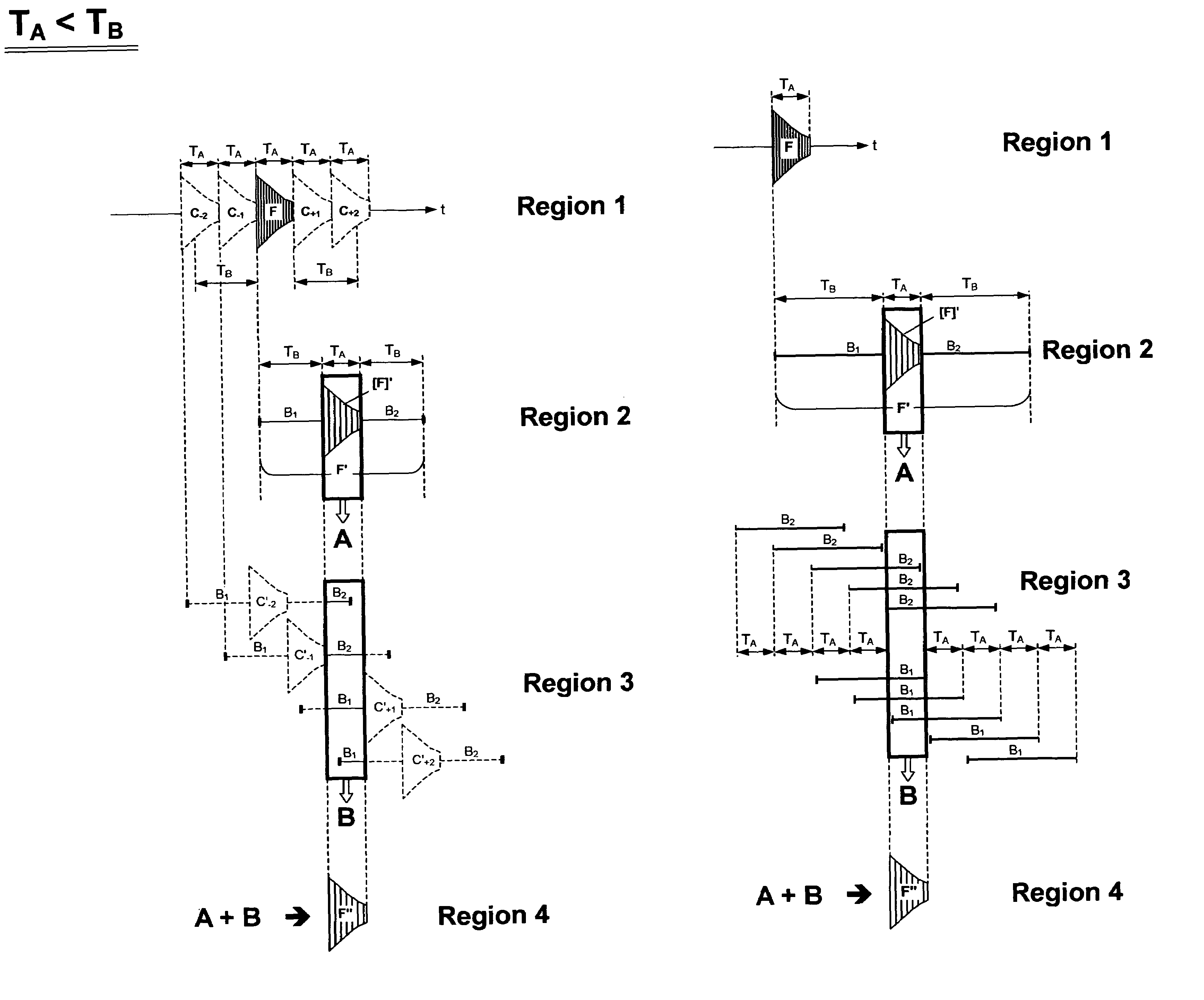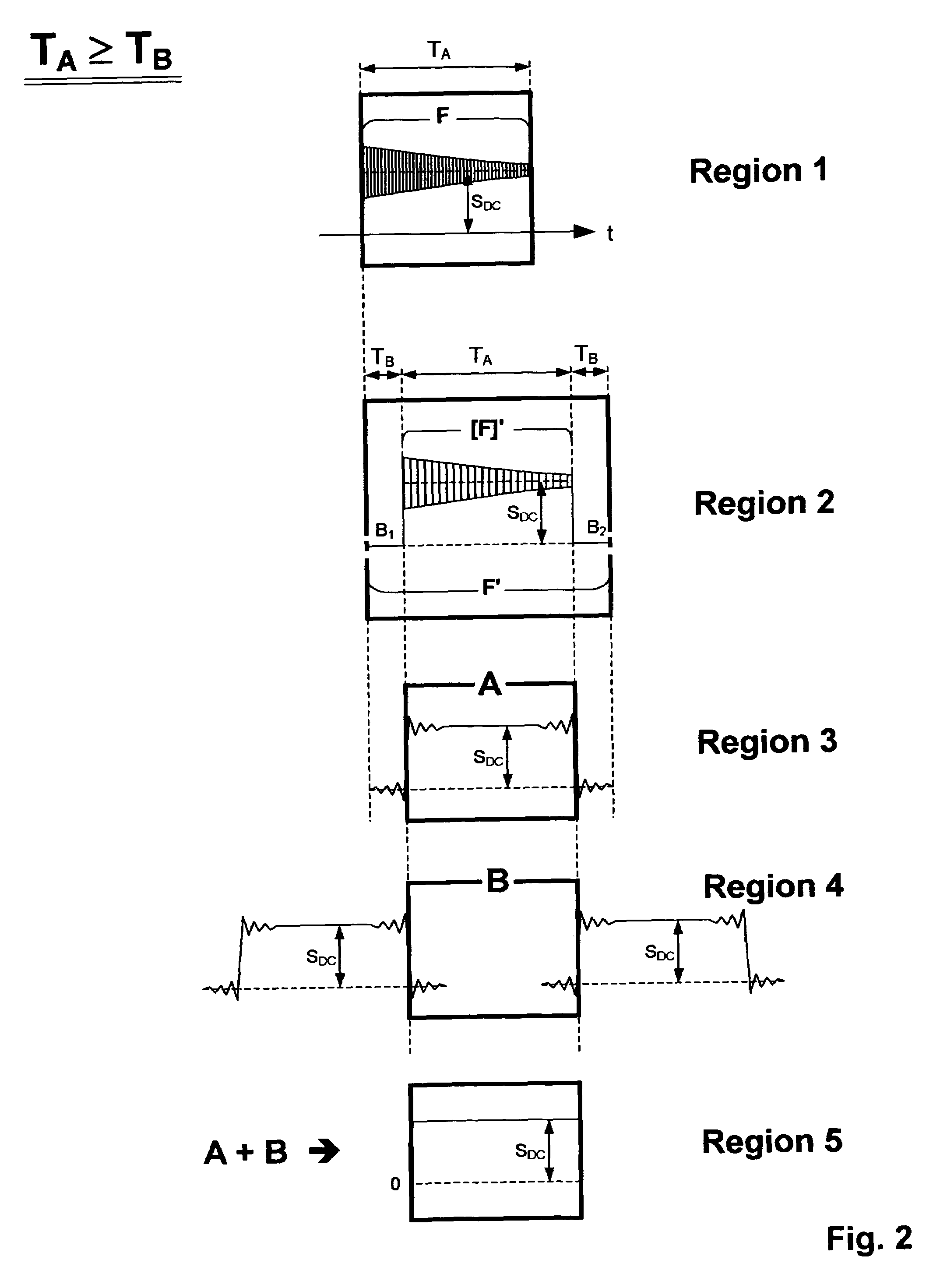Digital filter for NMR an MRI applications
a technology of digital filter and mri, applied in the field of digital filter for nmr an mri application, can solve the problems of loss of information which is very small for high-resolution nmr spectroscopy, distortion of nmr spectrum, and linear-phased fir filter in nmr and mri is the shape of nmr signal in time domain,
- Summary
- Abstract
- Description
- Claims
- Application Information
AI Technical Summary
Problems solved by technology
Method used
Image
Examples
Embodiment Construction
[0065]FIG. 1 shows the case of TA≧TB and one can see that three sequential signals F′, namely C′−1, F′ and C′+1 are completely sufficient to define F″ (see regions 2 and 3). C′−1 and C′+1 are copies of F′ and are each displaced about TA in a positive and negative direction with respect to F′. Further copies of F′ are not required since they are sufficiently far away from F′ that their rising or decaying oscillations can no longer overlap the signal F′. In this case N=1.
[0066]FIG. 1 shows initial selection of the NMR signal [F]′ only and its storage as value A (region 2). The decaying oscillation B2 of C′−1 and the rising oscillation B1 of C′+1 are subsequently selected and stored as value B (region 3). A and B are finally added which produces the desired signal F″ of length TA (region 4).
[0067]If TAB more than three successive signals F′ must be taken into consideration. FIG. 3 shows a corresponding example, wherein TB=1.33 TA and five successive signals F′ are required to define F″...
PUM
 Login to view more
Login to view more Abstract
Description
Claims
Application Information
 Login to view more
Login to view more - R&D Engineer
- R&D Manager
- IP Professional
- Industry Leading Data Capabilities
- Powerful AI technology
- Patent DNA Extraction
Browse by: Latest US Patents, China's latest patents, Technical Efficacy Thesaurus, Application Domain, Technology Topic.
© 2024 PatSnap. All rights reserved.Legal|Privacy policy|Modern Slavery Act Transparency Statement|Sitemap



